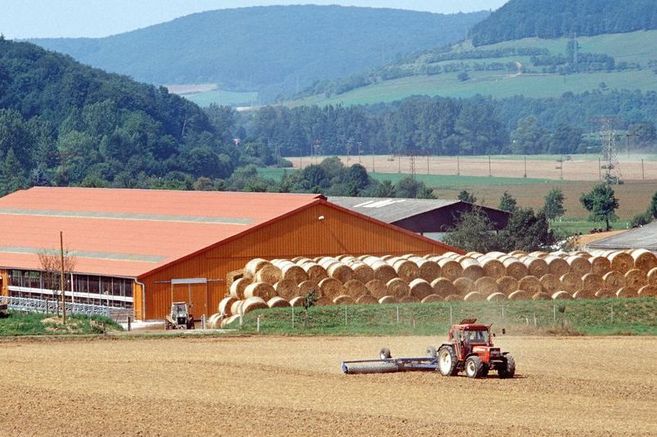Project
Distributional effects of CAP liberalisation

Distributional effects of CAP liberalisation
The Common Agricultural Policy (CAP) of the EU has a significant influence on farm incomes. But does the CAP reduce income gaps in the agricultural sector? What (unintended) distributional effects would further liberalisation of the European agricultural sector entail?
Background and Objective
We measure impacts of liberalising European agriculture on farm income distribution in western Germany. Unlike previous studies, we do not treat market income and policy support as independent income sources, but take into account that farms and market prices adjust to changing policies, which influences final results.
Approach
The calculation of income and distributional effects is based on farm accountancy data for Germany. To analyse the impact of policy changes, we couple the farm group model FARMIS and the market model ESIM (Deppermann et al., 2011a, 2011b). This allows us to simultaneously take into account market as well as farm adjustments. Using a micro-accounting-model we split results of the FARMIS-model to single-farm level and examine to what extent data availability and aggregation level influence the results of distributional analyses of agricultural policy reforms. W additionally analyse the sensitivity of results to the choice of the reference scenario, which generally may influence level and direction of distributional effects.
Results
Our analysis shows that redistributive effects of liberalising the agricultural sector differ depending on the application of the measure of inequality. (Deppermann et al., 2014). In the current design, the first pillar of the EU-CAP is not an efficient instrument to achieve a more equal distribution of farm income. We find that although the inclusion of adjustment effects generally does not affect the direction of distributional effects, it may have considerable impact on their magnitude. The results proved to be robust to a variation of the reference scenario.
However, the aggregation level is important when evaluating distributional effects of policy reforms. Comparing the inequality analysis based on individual data with an analysis of grouped data reveals that the level of inequality may be seriously underestimated when only taking grouped data into account.
Links and Downloads
Thünen-Contact

Involved external Thünen-Partners
- Leibniz-Institut für Agrarentwicklung in Transformationsökonomien
(Halle, Deutschland) -
Universität Hohenheim
(Hohenheim, Deutschland) -
Humboldt-Universität zu Berlin
(Berlin, Deutschland) - Georg-August-Universität Göttingen
(Göttingen, Deutschland)
Duration
1.2008 - 12.2013
More Information
Project status:
finished
Publications to the project
- 0
Deppermann A, Grethe H, Offermann F (2014) Distributional effects of CAP liberalisation on western German farm incomes: an ex-ante analysis. Eur Rev Agric Econ 41(4):605-626, DOI:10.1093/erae/jbt034
- 1
Deppermann A, Grethe H, Offermann F (2011) Distributional effects of the CAP on western German farm incomes and regional farm income disparity : paper prepared for presentation at the EAAE 2011 Congress "Change and Uncertainty, Challenges for Agriculture, Food and Natural Resources" ; August 30 to September 2, 2011 ; ETH Zurich, Zurich, Switzerland. 12 p
- 2
Deppermann A, Grethe H, Offermann F (2011) Effekte einer EU-Agrarmarktliberalisierung auf Betriebsebene: Simulationen anhand eines europäischen Agrarsektormodells und eines Angebotsmodells für den deutschen Agrarsektor. Schr Gesellsch Wirtsch Sozialwiss Landbaues 46:371-383



![[Translate to English:] Logo des Bundesministerium für Ernährung und Landwirtschaft](/media/allgemein/logos/BMEL_Logo.svg)